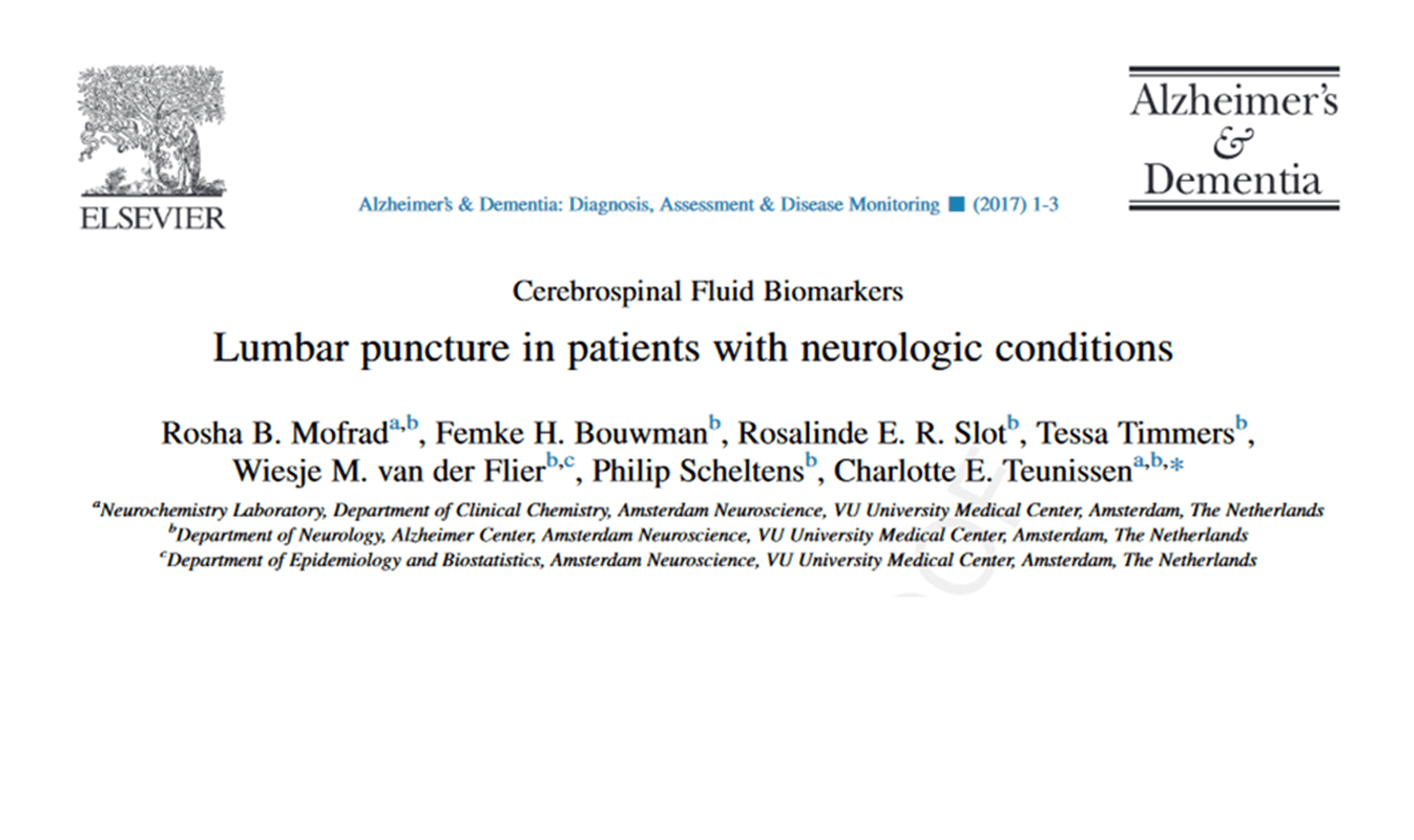 “Lumbar puncture in patients with neurologic conditions” has been published in the journal Alzheimer’s & Dementia: Diagnosis Assessment & Disease Monitoring. This work was supported in part by JPND through the BIOMARKAPD project, selected in the 2011 Biomarkers call.
“Lumbar puncture in patients with neurologic conditions” has been published in the journal Alzheimer’s & Dementia: Diagnosis Assessment & Disease Monitoring. This work was supported in part by JPND through the BIOMARKAPD project, selected in the 2011 Biomarkers call.
Yearly Archives: 2017
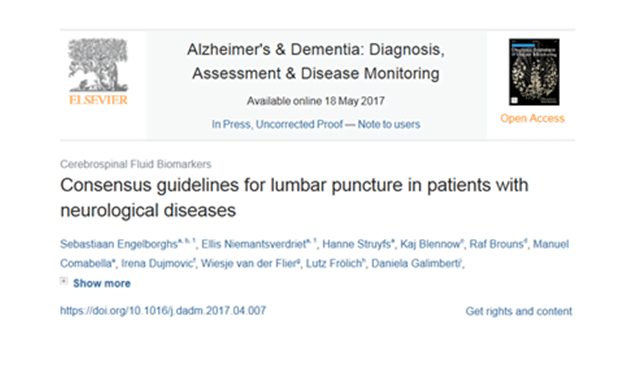 “Consensus guidelines for lumbar puncture in patients with neurological diseases“ was published in the journal Alzheimer’s & Dementia: Diagnosis Assessment & Disease Monitoring. This work was supported in part by JPND through the BIOMARKAPD project, selected in the 2011 Biomarkers call.
“Consensus guidelines for lumbar puncture in patients with neurological diseases“ was published in the journal Alzheimer’s & Dementia: Diagnosis Assessment & Disease Monitoring. This work was supported in part by JPND through the BIOMARKAPD project, selected in the 2011 Biomarkers call.
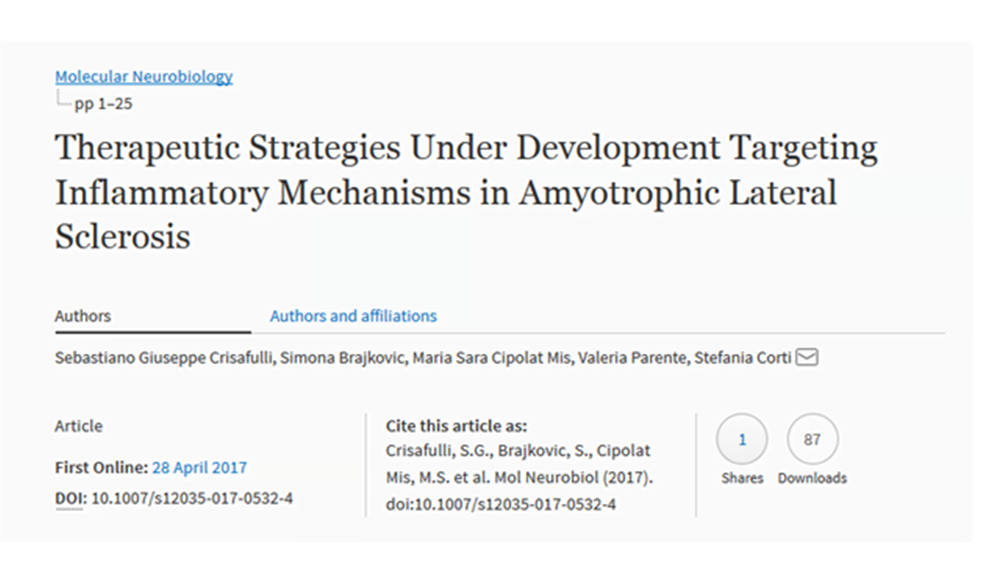 “Parkinson’s Disease-Associated Mutant LRRK2-Mediated Inhibition of miRNA Activity is Antagonized by TRIM32” has been published in the journal Molecular Neurobiology. This work was supported in part by JPND through the 3DPD project, selected in the 2015 JPco-fuND call and the SynSpread project, selected in the 2013 JPND Cross-Disease Analysis call.
“Parkinson’s Disease-Associated Mutant LRRK2-Mediated Inhibition of miRNA Activity is Antagonized by TRIM32” has been published in the journal Molecular Neurobiology. This work was supported in part by JPND through the 3DPD project, selected in the 2015 JPco-fuND call and the SynSpread project, selected in the 2013 JPND Cross-Disease Analysis call.
A major contributor to most neurological diseases is the degeneration of a wire-like part of nerve cells called an axon, which electrically transmits information from one neuron to another. The molecular programs underlying axon degeneration are therefore important targets for therapeutic intervention — the idea being that if axons can be preserved, rather than allowed to die in diseased conditions, then loss of critical processes like movement, speech or memory will be slowed.
For more than 150 years, researchers believed that axons died independently of one another when injured as a result of trauma, such as stroke or brain injury, or of a neurological disease, such as Alzheimer’s.
But a new study challenges this idea and suggests that axons coordinate each other’s destruction, thereby contributing to the degeneration that makes neurological diseases so devastating and permanent.
The paper appears in the journal Current Biology.
The coordination described in the paper creates a ripple effect of neuron death that confounds efforts to restore the growth of healthy cells. However, the researchers also found that the death spiral can be slowed when this communication is blocked using a laboratory method that could inspire pharmacological therapies to treat pathological axon degeneration. The method demonstrates that injured axons can be preserved for at least 10 times longer when their communication with neighbors is blocked.
The researchers believe that axons communicate the death message to each other during injury as a leftover activity, “borrowed” from the nervous system’s developmental period when axons are overproduced and then improper or unnecessary connections are eliminated by similar communication between axons. While this process is essential during development, it appears to be hijacked in diseased or traumatic conditions to reactivate and accelerate neuron degeneration.
The researchers have found that axons receive the message to die as a chemical signal via a cell surface receptor known as “death receptor 6.” They speculate that this chemical signal is released from the axon itself, and they currently are working to determine the identity of this chemical signal.
Paper: “Death Receptor 6 Promotes Wallerian Degeneration in Peripheral Axons”
Reprinted from materials provided by the University of Virginia.
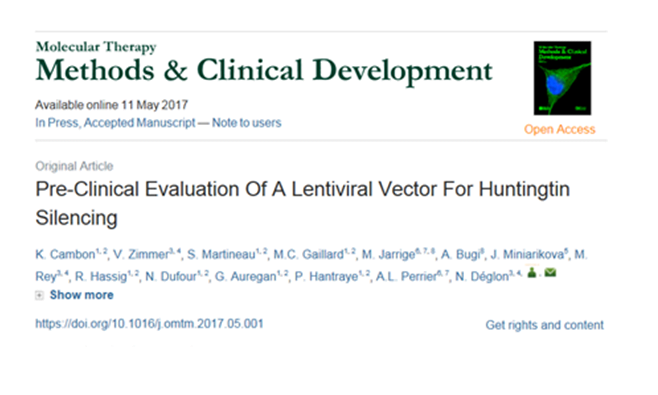 “Pre-Clinical Evaluation Of A Lentiviral Vector For Huntingtin Silencing” has been published in the journal Molecular Therapy: Methods & Clinical Development. This work was supported in part by JPND through the ModelPolyQ project, selected in the 2015 JPco-fuND call.
“Pre-Clinical Evaluation Of A Lentiviral Vector For Huntingtin Silencing” has been published in the journal Molecular Therapy: Methods & Clinical Development. This work was supported in part by JPND through the ModelPolyQ project, selected in the 2015 JPco-fuND call.
A simple blood test may be as accurate as a spinal fluid test when trying to determine whether symptoms are caused by Parkinson’s disease or another atypical parkinsonism disorder, according to a new study published in Neurology.
In early stages of disease, it can be difficult to differentiate between Parkinson’s disease and atypical parkinsonism disorders (APDs) like multiple system atrophy, progressive supranuclear palsy and corticobasal degeneration, because symptoms can overlap. But identifying these diseases early is important because expectations concerning progression and potential benefit from treatment differ dramatically between Parkinson’s and APDs.
The study found that a nerve protein called neurofilament light chain protein can, when found in the blood, discriminate between Parkinson’s disease and APDs . It is a component of nerve cells and can be detected in the blood stream and spinal fluid when nerve cells die.
For the study, researchers examined 504 people from three study groups. Two groups, had healthy people and people who had been living with Parkinson’s or APDs for an average of four to six years. The third group was comprised of people who had been living with the diseases for three years or less. In all, there were 244 people with Parkinson’s, 88 with multiple system atrophy, 70 with progressive supranuclear palsy, 23 with corticobasal degeneration and 79 people who served as healthy controls.
Researchers found the blood test was just as accurate as a spinal fluid test at diagnosing whether someone had Parkinson’s or an APD, in both early stages of disease and in those who had been living with the diseases longer. The nerve protein levels were higher in people with APDs and lower in those with Parkinson’s disease and those who were healthy.
The researchers say that one limitation of nerve protein testing is that it does not distinguish between the different APDs, however, they note that doctors can look for other symptoms and signs to distinguish between those diseases.
Paper: “Blood-based NfL: A biomarker for differential diagnosis of parkinsonian disorder”
Reprinted from materials provided by the American Academy of Neurology (AAN).
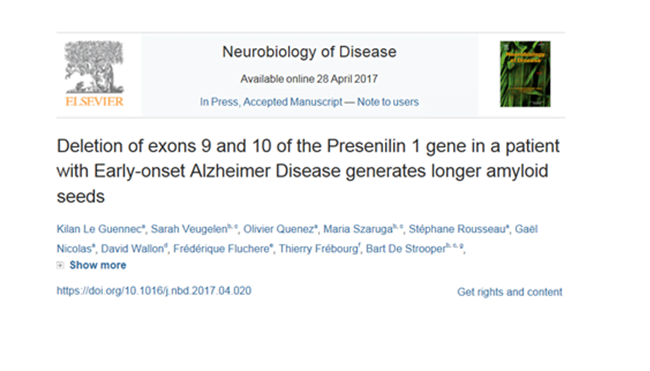 “Deletion of exons 9 and 10 of the Presenilin 1 gene in a patient with Early-onset Alzheimer Disease generates longer amyloid seeds” has been published in the journal Neurobiology of Disease. This work was supported in part by JPND through the PERADES project, selected in the 2012 Risk Factors call.
“Deletion of exons 9 and 10 of the Presenilin 1 gene in a patient with Early-onset Alzheimer Disease generates longer amyloid seeds” has been published in the journal Neurobiology of Disease. This work was supported in part by JPND through the PERADES project, selected in the 2012 Risk Factors call.
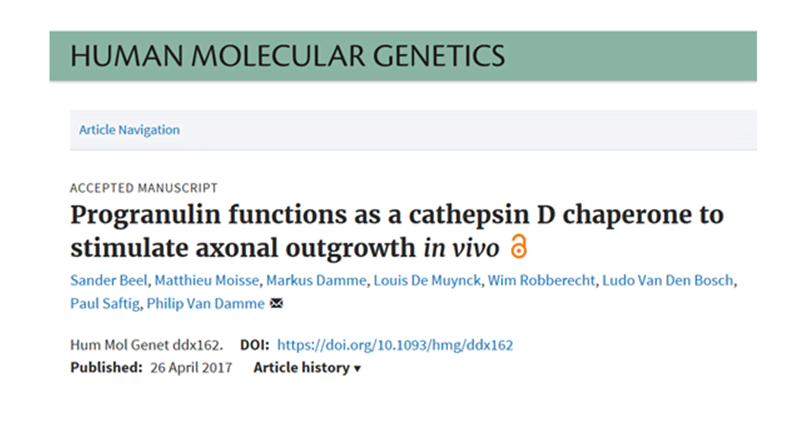 “Progranulin functions as a cathepsin D chaperone to stimulate axonal outgrowth in vivo” has been published in the journal Human Molecular Genetics. This work was supported in part by JPND through the STRENGTH and RiMod-FTD projects, selected in the 2012 Risk Factors call.
“Progranulin functions as a cathepsin D chaperone to stimulate axonal outgrowth in vivo” has been published in the journal Human Molecular Genetics. This work was supported in part by JPND through the STRENGTH and RiMod-FTD projects, selected in the 2012 Risk Factors call.
Scientists say neurodegenerative diseases like Alzheimer’s and Parkinson’s may be linked to defective brain cells disposing toxic proteins that make neighboring cells sick.
In a study published in Nature, researchers found that while healthy neurons should be able to sort out and rid brain cells of toxic proteins and damaged cell structures without causing problems, laboratory findings indicate that it does not always occur.
These findings could have major implications for neurological disease in humans and possibly be the way that disease can spread in the brain.
Scientists have understood how the process of eliminating toxic cellular substances works internally within the cell, comparing it to a garbage disposal getting rid of waste, but they did not know how cells released the garbage externally.
Working with the transparent roundworm, known as the C. elegans, which are similar in molecular form, function and genetics to those of humans, the researchers discovered that the worms — which have a lifespan of about three weeks — had an external garbage removal mechanism and were disposing these toxic proteins outside the cell as well.
The researchers found that roundworms engineered to produce human disease proteins associated with Huntington’s disease and Alzheimer’s, threw out more trash consisting of these neurodegenerative toxic materials. While neighboring cells degraded some of the material, more distant cells scavenged other portions of the diseased proteins.
Paper: “C. elegans neurons jettison protein aggregates and mitochondria under neurotoxic stress”
Reprinted from materials provided by Rutgers University.
 “Modelling amyotrophic lateral sclerosis: progress and possibilities” has been published in the journal Disease Models & Mechanisms. This work was supported in part by JPND through the STRENGTH and RiMod-FTD projects, selected in the 2012 Risk Factors call.
“Modelling amyotrophic lateral sclerosis: progress and possibilities” has been published in the journal Disease Models & Mechanisms. This work was supported in part by JPND through the STRENGTH and RiMod-FTD projects, selected in the 2012 Risk Factors call.
